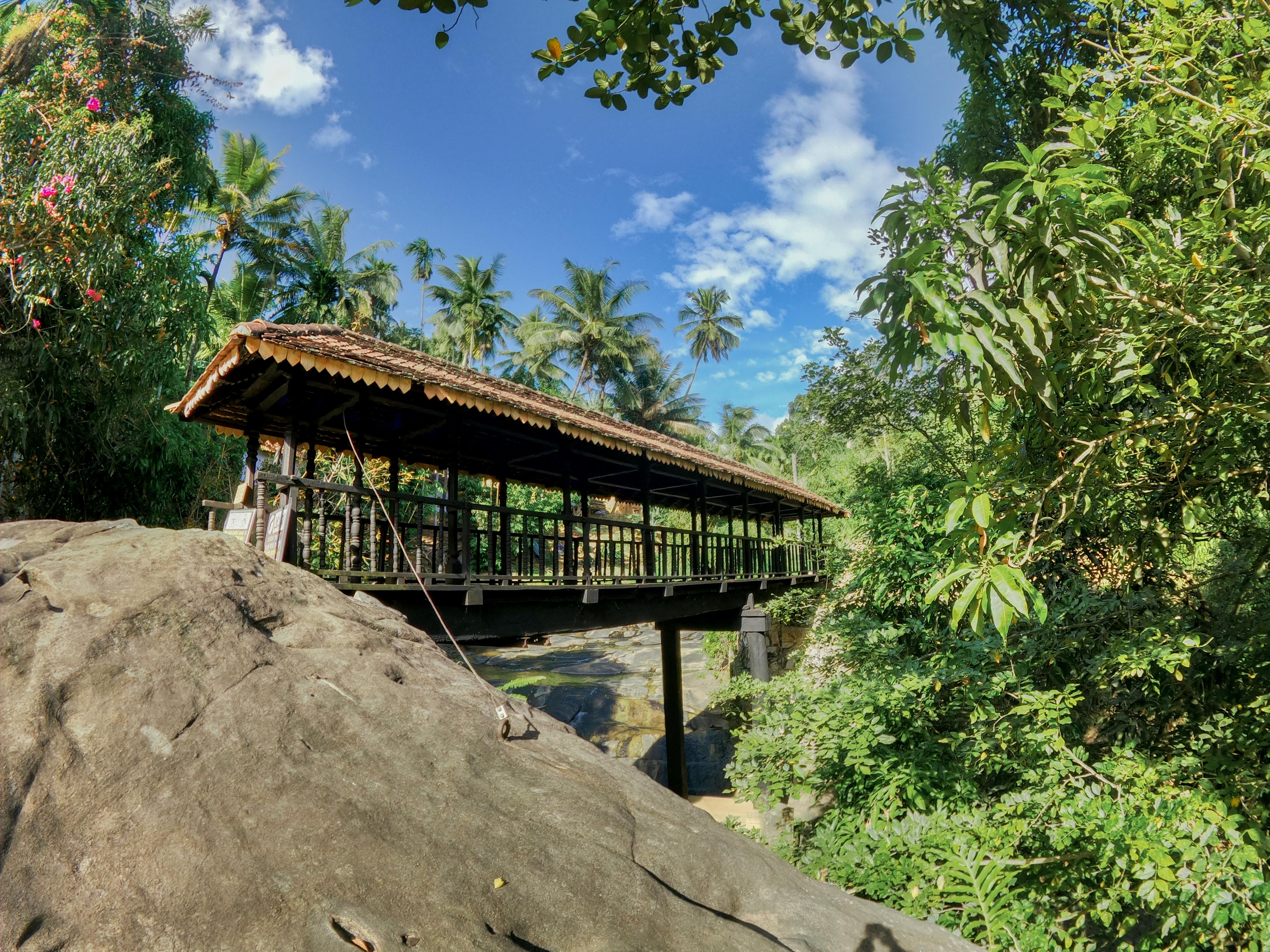The Bogoda Old Wooden Bridge is believed to have been constructed during the Kandyan Kingdom era, which spanned from the 15th to the early 19th century. While the exact date of its construction remains uncertain, it is widely regarded as one of the oldest surviving wooden bridges in Sri Lanka. The bridge served as a vital link connecting communities and facilitating trade and travel across the region.
What makes the Bogoda Bridge truly remarkable is its distinctive architectural design and construction. The entire structure is crafted from wood, utilizing traditional Sinhalese architectural techniques and craftsmanship. It features an arched design with a steeply pitched roof, supported by massive wooden columns and beams. The roof is covered with layers of palm leaves, providing protection from the elements. Notably, the bridge is constructed entirely without the use of nails or metal fasteners, relying instead on intricate wooden joinery to hold the components together.
The Bogoda Old Wooden Bridge holds immense cultural significance for the local community and Sri Lanka as a whole. It is considered a symbol of the country's rich architectural heritage and craftsmanship. The bridge reflects the ingenuity and skill of ancient builders who constructed enduring structures using traditional materials and techniques. Additionally, the Bogoda Bridge is often associated with local folklore and legends, adding to its cultural allure.
Over the years, the Bogoda Old Wooden Bridge has become a popular tourist attraction, attracting visitors from around the world who come to admire its historical significance and architectural beauty. The bridge's serene surroundings, nestled amidst lush greenery and tea plantations, further enhance its appeal. Visitors can explore the bridge, walk along its covered walkway, and soak in the picturesque views of the surrounding landscape.
Recognizing the importance of preserving this invaluable piece of Sri Lanka's heritage, efforts have been made to maintain and protect the Bogoda Old Wooden Bridge. Conservation initiatives have been undertaken to prevent decay and structural deterioration, ensuring that future generations can continue to appreciate its beauty and historical significance.
